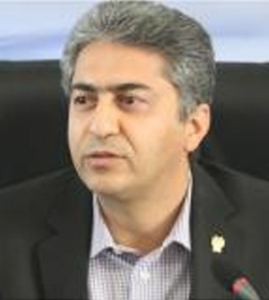Kermanshah university of medical sciences Ravansar Non-Communicable Disease (RaNCD) cohort study
Principal Investigator: Prof. Farid Najafi
– Professor of Epidemiology, Research Center for Environmental Determinants of Health, School of Public Health, Kermanshah University of Medical Sciences, Kermanshah, Iran. – Building No 2, Shahid Beheshti blvd, Vice chancellor of Research and Technology – fnajafi@kums.ac.ir
Approval date
August 9, 2014
Starting date
November 19, 2014
Goals
To investigate NCD risk factors for people aged 35-65 years in Kurdish settlement of Iran. Main objectives A) To determine the incidence of major NCDs in people aged 35-65 years B) To identify and measure the association between risk factors and NCDs C) To determine the incidence of main outcomes related to NCDs and its related risk factors
Study population
All eligible people between the ages of 35 and 65 living in Ravensar County
Sampling method and sample size
Convenient sampling by including 10,000 resident of Ravansar
Data Collection
All data were collected based on the Persian cohort protocol. Individual and socioeconomic information, their exposure status including physical activity, nutrition, individual habits as well as information about their illnesses along with drug use and full examinations related to biochemical tests are performed and all information about their examinations are recorded. A sample of urine, nails and hair is also collected from all individuals.
Follow up Methods
The annual follow-up stage is to be conducted in both active and passive modes for next 15 years. In addition, full assessment (same as the recruitment phase) will be conducted three times; by 5-year interval. In the active follow-up, each participant will be contacted by telephone. The passive follow-up involves obtaining self-reports (whenever he/she visit the center) and annual reports from disease and death registries.
Main Exposures
Main Exposures can be divided into 3 major sections: general, medical and nutritional including: a. Questions on socio-economic status and lifestyle b. Environmental and occupational exposures c. General health and medical history d. Blood, urine, hair and nail collection and analysis e. Anthropometric measurements f. Reproductive history g. Nutritional status
Outcomes
cardiovascular diseases (increased blood pressure, heart attacks and other ischemic heart diseases), cerebrovascular accidents, cancers, diabetes mellitus, chronic pulmonary diseases (such as asthma, chronic bronchitis, pulmonary emphysema and pneumoconiosis), chronic kidney disease leading to dialysis, cirrhosis, Parkinson s and Alzheimer s diseases, hospital admission and deaths.
Cohort Study
Gallery


